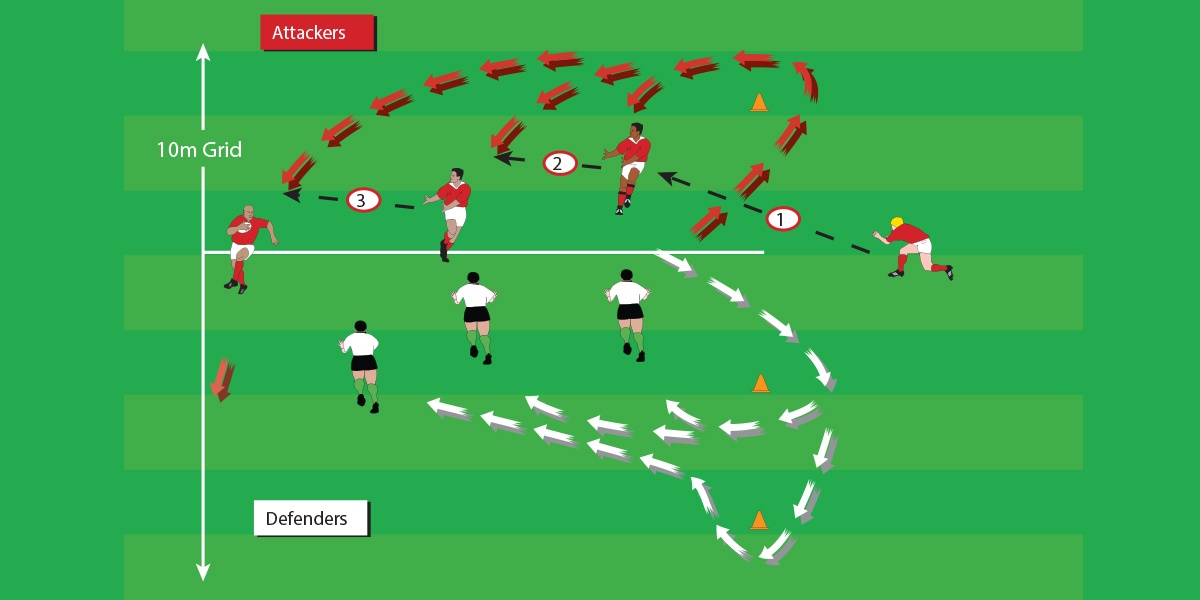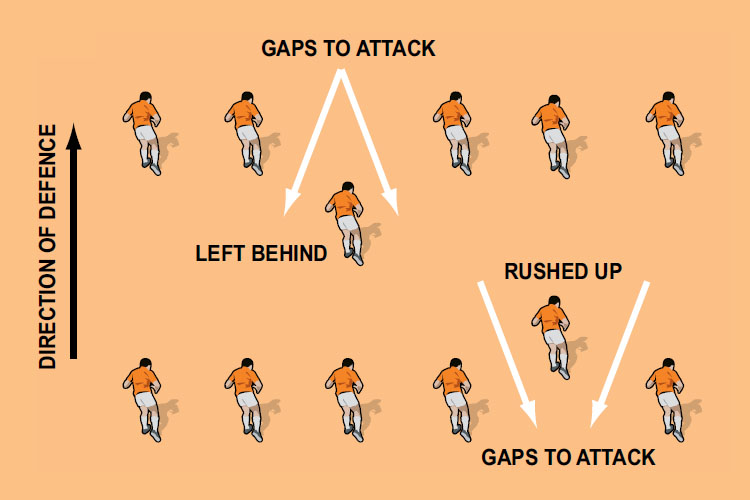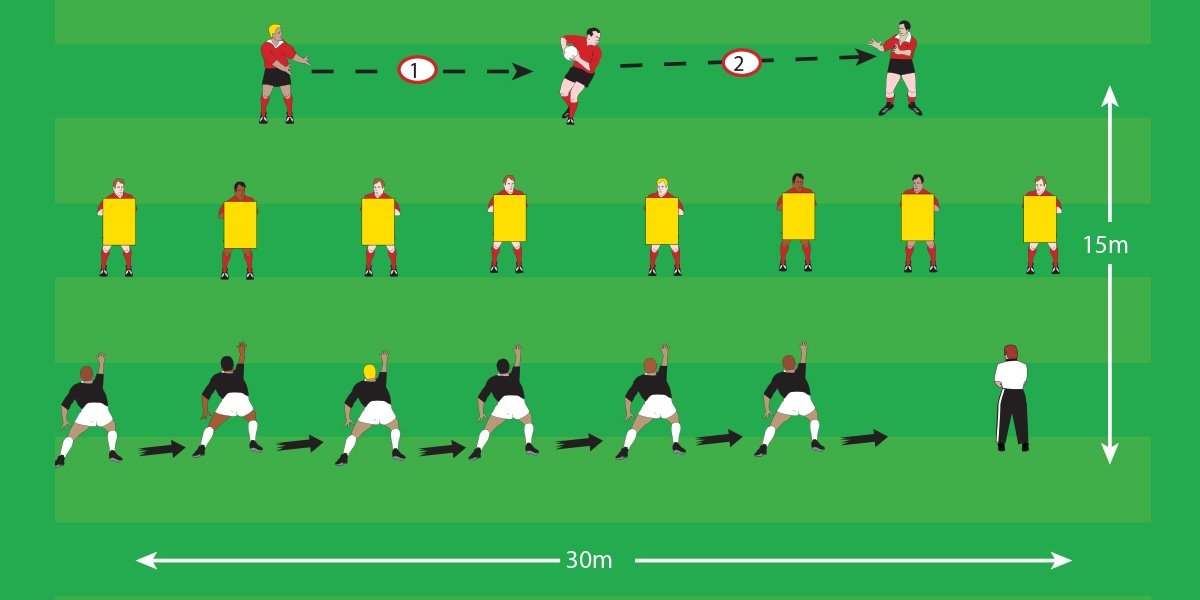Defense in rugby is as crucial as attack. A solid defense can stop the opposition from scoring, build momentum for your team, and even create opportunities for counter-attacks. Mastering rugby training drills for defense is essential for players at all levels who want to enhance their defensive skills, be it in tackling, positioning, or communication. In this comprehensive guide, we will explore effective drills and techniques that can help you and your team become a defensive powerhouse.
Also Read: Swimming Stroke Techniques for Speed

Why Rugby Training Drills for Defense Are Important
A well-organized and skillful defense can often make the difference between winning and losing a game. The objective of defense in rugby is not only to stop the attacking team but also to pressure them into mistakes, win turnovers, and ultimately disrupt their rhythm. Effective defense is built on agility, awareness, strength, and technique.
Rugby training drills for defense serve multiple purposes:
- Improve tackling technique: Good tackling prevents line breaks and forces turnovers.
- Boost positioning: Being in the right position allows defenders to react quickly and efficiently.
- Enhance communication: A cohesive defensive line needs clear and constant communication to stay organized.
- Build fitness: Defenders often need to sprint and change direction quickly. Conditioning is key to staying competitive.
Let’s explore some of the best rugby defense drills that can help improve your defensive performance.
1. Tackling Drills
The Importance of Tackling in Rugby Defense
Tackling is one of the core elements of rugby training drills for defense. A well-executed tackle can stop an attack in its tracks, but a poor tackle can lead to missed opportunities and costly penalties. Proper tackling technique is vital for ensuring safety and effectiveness during the game.
Key Tips for Effective Tackling:
- Stay low: Keep your body position low to the ground, with your knees bent and head up to avoid head injuries.
- Drive with your legs: As you make contact with the ball carrier, drive through them with your legs, not just your arms.
- Wrap up: Always wrap your arms around the ball carrier, making sure to secure the tackle and bring them to the ground.
Tackling Drill: The “One-on-One Tackle Drill”
This drill involves two players: one acting as the tackler and the other as the ball carrier. The ball carrier runs toward the tackler, who must execute a proper tackle to bring them down.
- Step 1: The ball carrier sprints towards the tackler.
- Step 2: The tackler moves forward, keeps low, and wraps their arms around the ball carrier’s legs.
- Step 3: The tackler drives the ball carrier to the ground.
This simple drill can be performed repeatedly to build muscle memory and improve the accuracy of tackles.

2. Positioning Drills
The Role of Positioning in Defensive Play
In rugby, positioning is critical for defending effectively. Poor positioning can create gaps in the defense line, which attackers can exploit. Rugby training drills for defense focused on positioning can help defenders stay in the right place at the right time, allowing them to make quicker decisions and shut down the opposition more effectively.
Key Positioning Tips:
- Stay on your toes: Always be ready to move, whether you’re tracking the ball or preparing to react to the attacker’s next move.
- Maintain a balanced stance: Stay low and balanced to improve agility and reaction times.
- Anticipate passes: Position yourself where the opposition is most likely to pass, whether it’s inside the center or out wide.
Positioning Drill: The “Defensive Line Drill”
The Defensive Line Drill helps players improve their positioning and communication in defense. The drill involves several players working together as a defensive unit.
- Step 1: Set up a defensive line with players standing next to each other, ensuring there’s a small gap between them.
- Step 2: The attacking player runs with the ball towards the defensive line.
- Step 3: The defenders move in sync, shifting across the field to cover gaps while keeping their eyes on the ball carrier.
This drill reinforces the importance of maintaining a compact defensive line, covering angles, and shifting as a team.
3. Communication Drills
Why Communication is Key in Rugby Defense
In rugby, communication is just as important as individual defensive skills. Defenders need to talk to each other to organize the defensive line, call for support, and identify threats. Without clear communication, defensive lines can break down, leading to missed tackles or openings for attackers.
Key Communication Tips:
- Call for support: Always call for help if you’re engaged with an attacker or need backup.
- Direct traffic: Organize the defensive line by calling for players to move left or right or shift up.
- Stay positive: Use positive reinforcement and encouragement to keep morale high.
Communication Drill: The “Shout and React Drill”
In this drill, players work in pairs to practice both defensive positioning and vocal communication.
- Step 1: One player is the attacker, and the other is the defender.
- Step 2: The attacker runs toward the defender, who must react to their movements.
- Step 3: The defender shouts verbal cues to direct teammates and communicate their movements.
This drill helps defenders improve their awareness and ensures they don’t get caught off guard by the attacker.
4. Reaction and Agility Drills
The Role of Agility in Defensive Play
Agility is vital in rugby defense, as defenders need to quickly react to changes in direction, sudden passes, or unpredictable movements by the ball carrier. Rugby training drills for defense that focus on agility help players stay one step ahead of attackers and improve their ability to make quick, decisive moves.
Key Agility Tips:
- Use short, quick steps: When moving laterally or changing direction, use small steps to maintain control.
- Keep your body weight balanced: Avoid leaning too far forward or backward, as it can affect your ability to change direction quickly.

Agility Drill: The “Shuttle Run Drill”
The Shuttle Run Drill is an excellent way to improve reaction speed and footwork.
- Step 1: Set up cones in a straight line, with each cone placed a few meters apart.
- Step 2: Players start at one end and sprint to the first cone, touch the cone, then run back to the start line.
- Step 3: Repeat this process for all cones, ensuring players focus on quick turns and explosive starts.
FAQs About Rugby Training Drills for Defense
1. What are the key components of a strong rugby defense?
A strong rugby defense relies on excellent tackling, good positioning, quick reactions, and effective communication. Regular rugby training drills for defense can help players develop these skills.
2. How can I improve my tackling technique in rugby?
To improve tackling, focus on staying low, driving through the opponent, and wrapping your arms around their legs. Practice these movements regularly with drills like the One-on-One Tackle Drill.
3. Why is communication important in defense?
Communication helps organize the defensive line, keeps players informed of the ball carrier’s movements, and ensures players know when they need support. Practicing vocal drills like the Shout and React Drill can improve this aspect.
4. What are some common mistakes in rugby defense?
Some common mistakes in rugby defense include poor body position, missed tackles, and poor communication. These can be improved by practicing the right rugby training drills for defense consistently.
5. How often should I practice defensive drills in rugby?
Defensive drills should be incorporated into your training routine regularly. Aim for at least two to three sessions per week, focusing on different aspects such as tackling, positioning, and agility.
Conclusion
Rugby training drills for defense are essential for building a strong and cohesive defensive unit. By focusing on key skills such as tackling, positioning, communication, and agility, you can significantly improve your performance on the field. Incorporating these drills into your training will not only make you a better defender but will also contribute to the overall success of your team. Remember, defense is about more than just stopping the opposition – it’s about creating pressure, forcing errors, and turning defense into attack.

1 thought on “Rugby Training Drills for Defense: Elevate Your Defensive Game”